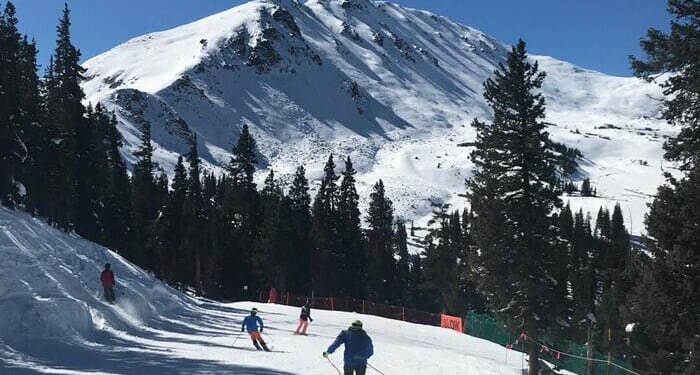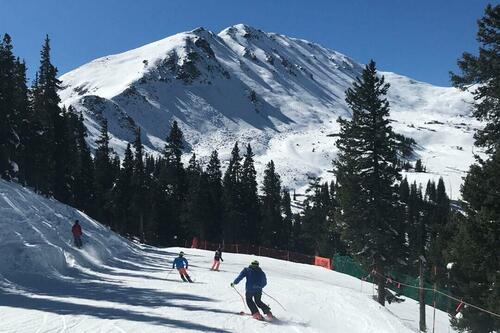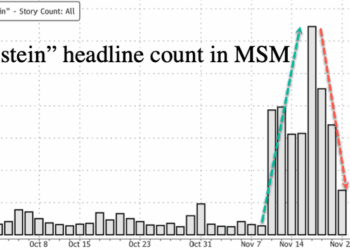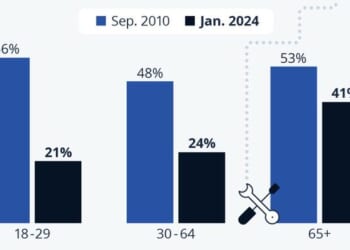Authored by T.J.Muscaro via The Epoch Times,
A La Niña advisory has officially been issued by the Climate Prediction Center, signaling a possible precedent for winter across the United States.
Conditions emerged at the end of September and were favored to persist through December 2025 into February 2026.
The opposite of the weather phenomenon called El Niño, La Niña refers to when the water temperatures of the central and eastern Pacific Ocean around the equator are cooler than average. That cooling can impact global weather patterns thousands of miles away.
While it is expected to remain relatively weak, this year it is expected to have an effect on winters in the United States, especially regarding this year’s snowfall.
Here’s what La Niña conditions could look like for the United States this year.
North-South Divide
One of the most noticeable effects that La Niña could have on the United States is a moisture divide between the northern and southern states of the Lower 48.
To the north, colder and wetter conditions are generally expected, while the southern states are expected to experience a warmer and drier winter.
The National Oceanic and Atmospheric Administration’s (NOAA) seasonal outlook showed most of the United States was predicted to face above-average or near-above-average temperatures through October, November, and December. An area of the southern Rocky Mountains, particularly New Mexico, and most of New England are expected to experience relatively warmer temperatures.
The northwest, meanwhile, was predicted to have near-average temperatures.
NOAA noted that those temperature changes have already begun to show up.
“From mid-August to mid-September, below-average heights and temperatures were evident over the eastern U.S. Starting in mid-September, above-average heights and temperatures dominated the eastern U.S.,” NOAA reported on Oct. 14. ”From early September to mid-October, below-average heights and temperatures prevailed over the eastern North Pacific Ocean and parts of the western U.S.”
Rain and Snowfall
La Niña is also expected to bring changes to precipitation across the country, particularly snowfall. Much of the northwest from the Cascades in Washington State across the upper Midwest through New England will tend to see an increase in snowfall.
NOAA’s seasonal outlook indicated that much of Washington, Oregon, Montana, and Idaho are expected to see above-average levels of precipitation, while states in the southern Rockies, like New Mexico and Colorado, are expected to see below-average precipitation.
Several areas of the Rocky Mountains, including the Salt Lake City Area, have already reported significant amounts of early snowfall, and more is reported to be on the way.
The Weather Prediction Center reported heavy snow was to develop over the Sierra Nevada Mountains on Oct. 14 and Oct. 15.
However, that snow is coming in as part of a low-pressure system coming off the ocean and into California. The Weather Prediction Center issued a slight risk of excessive rainfall over parts of Southern California, noting that urban areas, roads, small streams, and low-lying areas could be vulnerable to flash flooding. Additional showers and thunderstorms were also expected to hit parts of the Southern Rockies also bringing heavy rain and risks of flash flooding.
During La Niña, the Southern Rockies historically tend to get below-average amounts of snowfall, as well as parts of the Ohio Valley.
That being said, Michelle L’Hereux, lead scientist of NOAA’s team responsible for studying La Niña and El Niño, said that, based on multi-factor computer models from NOAA and Columbia University, this La Niña impact is not likely to be very strong at all, suggesting temperatures and precipitation levels should remain closer to average.
“There is a three-out-of-four chance it will remain a weak event,” L’Heureux said in an email. “A weaker event tends to exert less of an influence on the global circulation, so it’s possible there will be surprises ahead.”
The Climate Prediction Center publishes monthly statements on the status of La Niña. The next one will be posted around Nov. 13.
Loading recommendations…


















